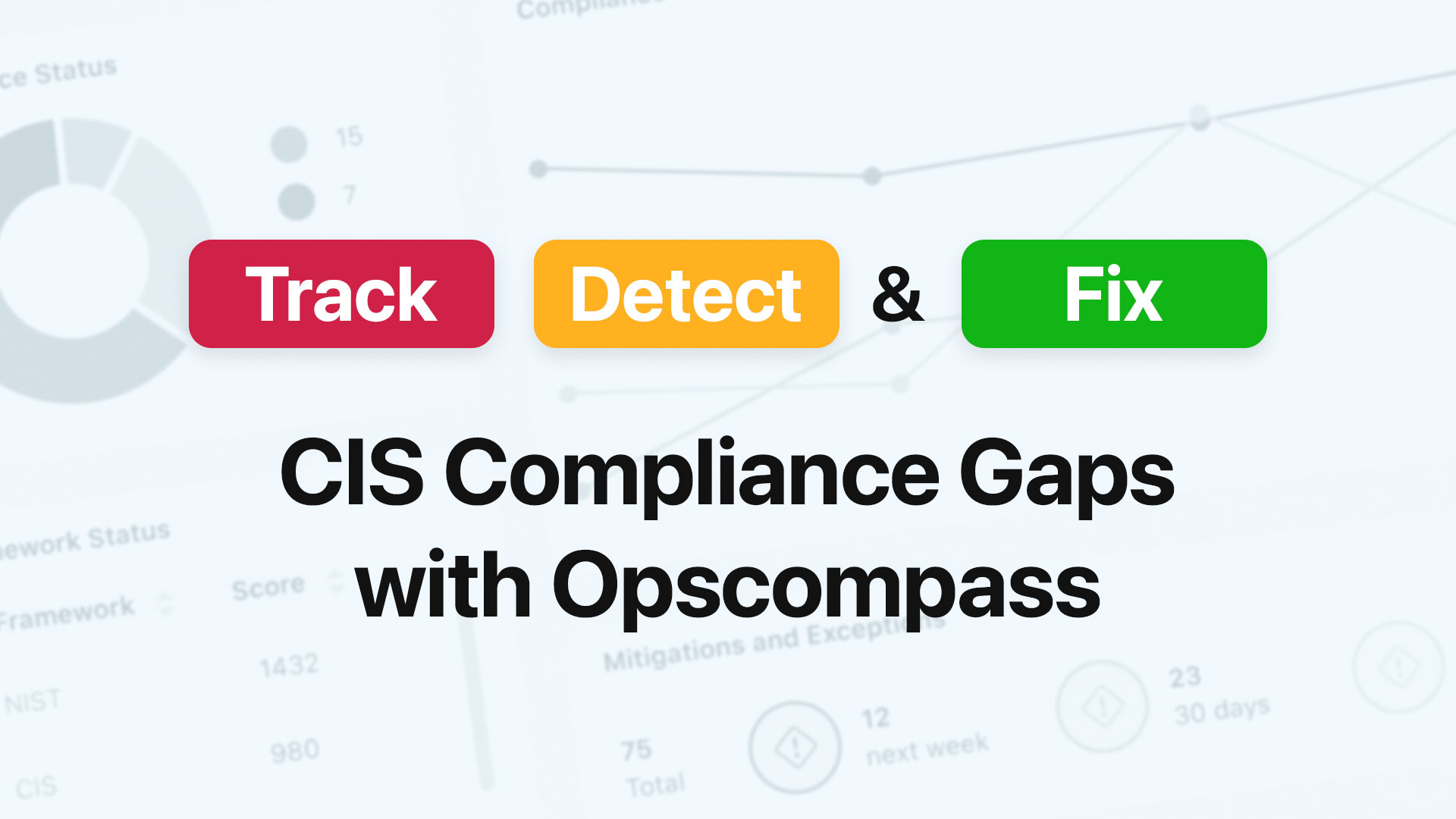“We have to find a way to work together…”
Those were the thoughts going through my mind and those of my new colleague, John Grange, after our initial meeting where he walked me through the OpsCompass product architecture and demoed the key features of this new and powerful solution for the Cloud Security Posture Management (CSPM) space.
For those of you who aren’t aware, CSPM is the new “configuration management” for cloud infrastructure. It is the act of detecting and remediating configuration drift, monitoring and enforcing security policies, and providing deep insights into how you are governing your cloud assets. It’s the type of thing that you can probably do ad hoc when your cloud deployment is small, but requires a dedicated focus and practice as you scale. This new type of cloud management, or new discipline within the IT management umbrella, is a key focus for 2020 and beyond as breached records caused by cloud misconfigurations grew by more than 80% in 2019.
In a way, OpsCompass seemed too good to be true. We’d been working with experts within the Elsewhere Partners Operating Advisor Network such as Kevin Cunningham, Founder and longtime Chief Strategy Officer at SailPoint, and identified a market need for a new kind of management tool: a product aimed at cloud configuration management with a focus on security, compliance, and governance. A couple of months later, after talking with the OpsCompass team and seeing a demo the product, I knew they had something special. For the first time in our conversations with companies in the sector, I saw a real-life, fully built, product that did what we’d only before seen on the whiteboard.
To back up a bit, we all know managing cloud infrastructure is hard. It’s like managing all the complexity of running your own data center and then layering all the complexity of next-generation cloud computing and DevOps on top of it. Today’s leading cloud providers optimize their products to be ultra-flexible, broadly customizable, highly performant, and easy to launch.
“I knew they had something special. For the first time in our conversations with companies in the sector, I saw a real-life, fully built, product that did what we’d only before seen on the whiteboard.”
All of that’s great when you’re first getting started running your enterprise workloads in the cloud. But as time goes by you realize that “highly customizable” and “easy to deploy” translate into “impossible to manage” and “growing out of control.” Add to this the fact that when you started on your cloud journey you only brought the best and brightest from your teams, but now that things are being deployed at scale, you’re going to need everyone’s help. That means some of those resources are going to be undertrained and lack a certain degree of “cloud savvy”.
It is at this inflection point of new technology adoption that great IT management tools are born. Pioneers like myself, and many of you out there, develop innovative solutions that expand our capabilities in unforeseen ways. Some technologies stick and some don’t, but for the technologies that do, momentum tends to build quickly. As this adoption builds, we start asking ourselves how we’re going to handle the new management workload and how we’re going to up-level the rest of our team so that we can all pull together.
It’s at this critical point in time: when a new technology has broad and accelerating adoption, when it has matured to include management APIs and protocols, and when customers are migrating mission critical workloads to this technology, that inventors like John Grange and Manny Quevedo see a need for a new type of IT management solution. OpsCompass is born and the real magic begins!
We at Elsewhere Partners are thrilled to work with the OpsCompass team as they help companies around the globe secure and govern their cloud deployments. Personally, I’m super excited to take some of my key learnings from scaling other IT management companies like SolarWinds and Idera, and apply them to accelerating the OpsCompass mission.




